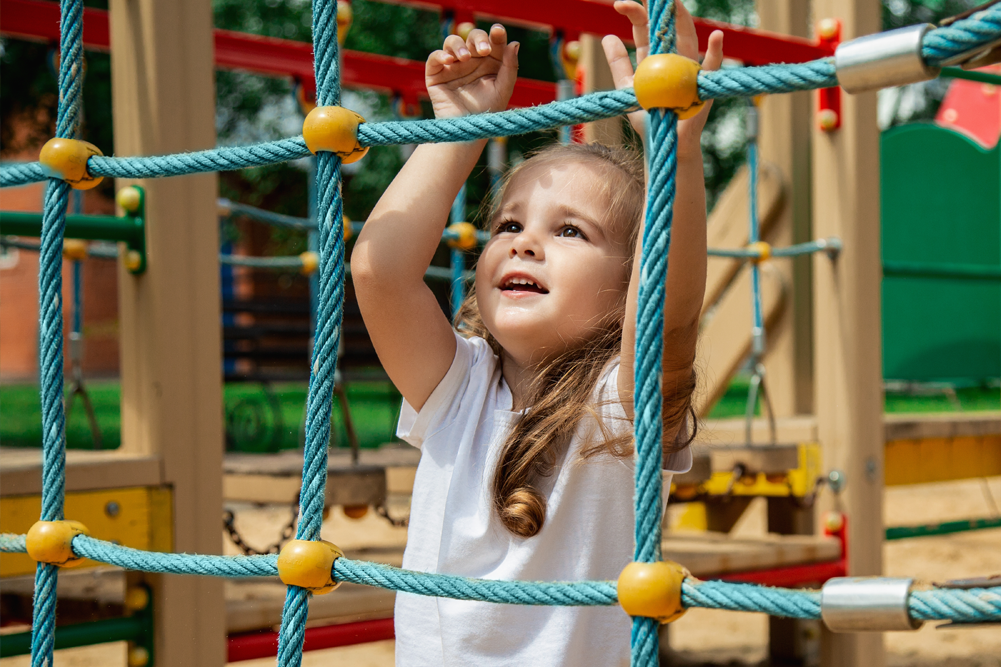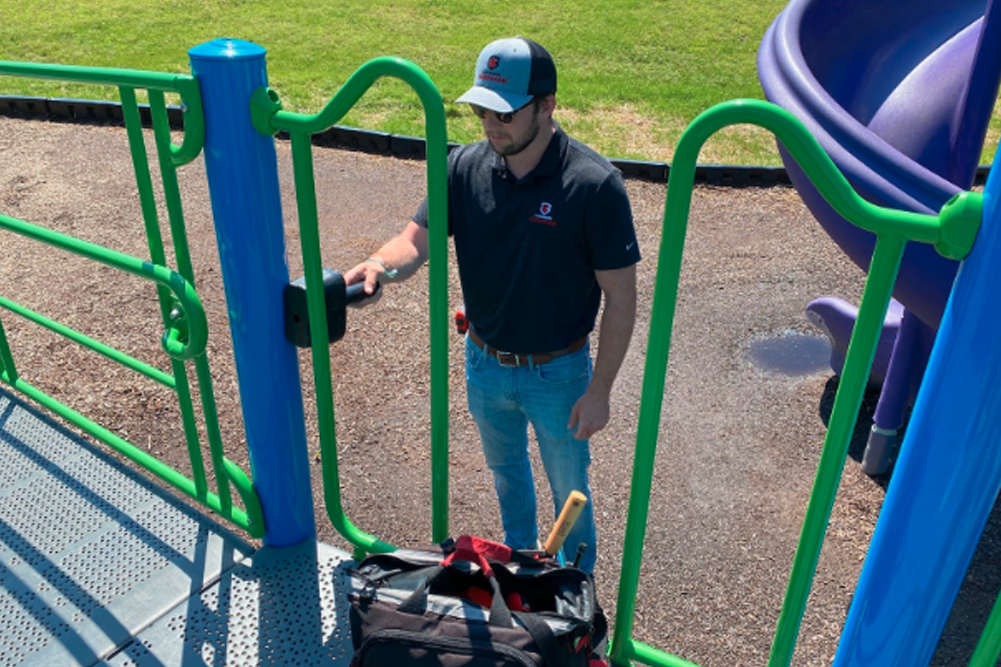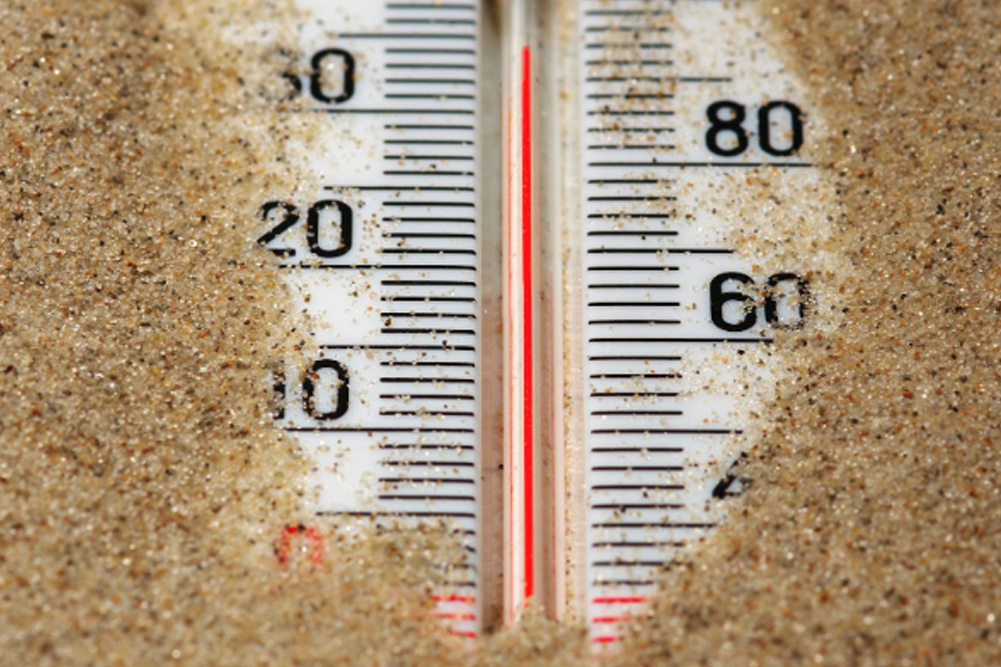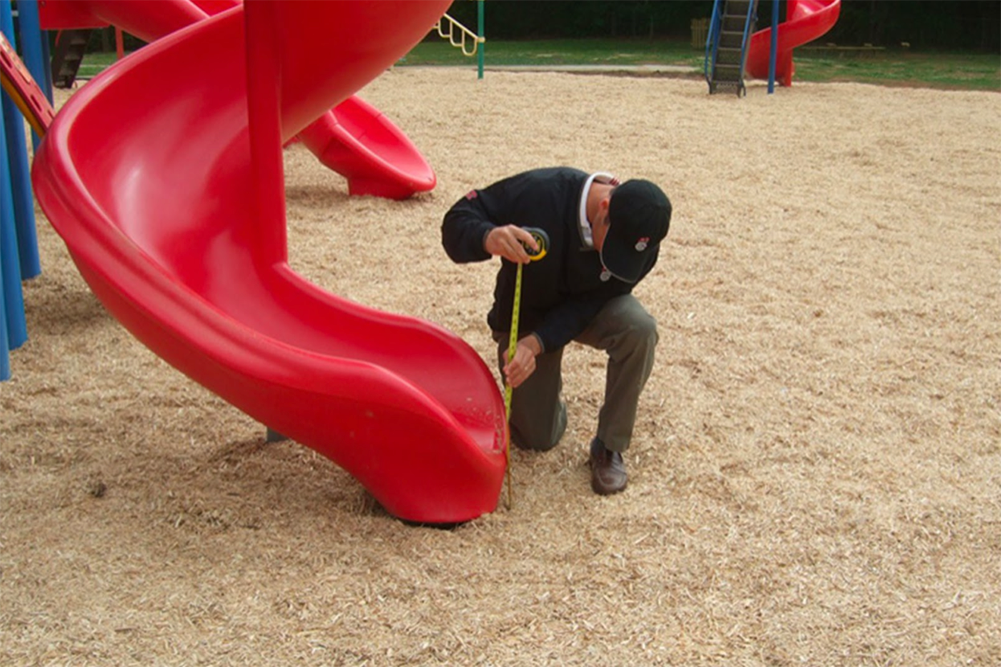If you’ve recently bought or started managing an indoor play space, you may be wondering how to clean indoor playground equipment. While inspection and sanitization are often overlooked in indoor play spaces, maintaining them is actually quite easy. Here’s everything you need to know about how to inspect and clean your indoor play equipment.
Do You Really Need to Clean Indoor Playground Equipment?
Your indoor playground may not currently have a cleaning schedule, but that doesn’t mean that it shouldn’t! Unlike outdoor play equipment, indoor playgrounds are not exposed to the sun’s UV rays (which help to kill bacteria). They can also trap germs from sneezes and coughs that would be dispersed by fresh air outdoors. This means that proper cleaning is even more important when maintaining safe play spaces indoors.
6 Tips for Indoor Playground Inspection
The first step in learning how to clean indoor playground equipment is to inspect the current condition of your space. Check out these five tips for inspecting and maintaining your indoor playground.
1. Create a Regular Inspection Schedule
If your indoor playground hasn’t been inspected in a while (or ever), the first step is to get on a regular schedule. Consider how often your playground equipment is used as well as the number and age of children who play on it to determine how frequent your inspections should be. And, always get the help of a licensed playground inspector to ensure your space meets technical requirements.
2. Be Proactive
A big part of inspecting and learning how to clean indoor playground equipment is being proactive about small issues. A tiny tear in a net or damaged loose-fill items like foam blocks may not seem dangerous, but over time they can cause bigger issues. Spending a little upfront to maintain your playground will save you from major expenses later on.
3. Identify and Isolate Dangerous Elements
Once you have a regular inspection schedule, get started with your first inspection by identifying any hazards like loose bolts, broken elements, and materials reaching the end of their life span. You may be able to rope off certain areas while they are repaired but more serious damage may require temporary closure of your entire play space until it is fixed.
4. Check for Entrapment Hazards
Since indoor playground equipment is often designed with space efficiency in mind, it can be prone to entrapment hazards where children’s heads can get stuck. Use appropriate gauges and probes to check all small spaces, even if you don’t believe the space is a concern. If you’re not sure how to identify entrapment hazards, you can utilize an app that guides you through the inspection process like Park Protector.
5. Pay Extra Attention to Moving Parts
Indoor playgrounds are often made from softer, less durable materials. This means that moving parts and other exciting interactive elements may wear out faster due to heavy use. Be sure to double-check these areas and make sure that moving parts are working as expected.
6. Make Repairs Quickly and Properly
Since indoor playgrounds are often made with more commonplace materials, it can be tempting to try to fix tears and broken parts yourself. However, these small “DIYs” can add up over time and compromise the structural integrity and safety of your playground. Always work with an indoor playground consultant to get your play equipment back in action.
5 Steps for Easy Indoor Playground Sanitization
Once you have established a regular indoor playground inspection schedule, it’s time to get (and keep) your equipment clean. Here are five tips on how to clean indoor playground equipment!
1. Prevent Playground Germs
Part of keeping your indoor playground clean is preventing germs and bacteria from reaching your equipment. Don’t allow food or drinks in your play area and offer hand sanitizer or access to bathrooms before and after play. And, encourage parents to keep their children at home if they aren’t feeling well. Setting these health-focused rules will help make your playground sanitization as effective as possible.
2. Don’t Just Clean, Sanitize!
All cleaners are not created equal. Make sure that the cleaning solution you choose sanitizes to kill germs, not just spread them or wipe them around. We recommend Peroxigard™, an effective sanitizing agent that is cost-effective and kid-safe.
3. Be Thorough
Indoor playground equipment often has tight spaces and/or loose fill substances (like balls or foam blocks) that can be difficult to clean. That means that one of the toughest parts of learning how to clean indoor playground equipment is being thorough and taking your time to clean everything properly.
If there are areas of your play equipment that simply can’t be cleaned, consider phasing them out and replacing them with more sanitary options over time.
4. Create a Cleaning Schedule
How often you sanitize your playground will depend on a number of factors, including how often children play there, how many children play there, and how old they are. An indoor playground consultant can help you figure out a schedule that is both effective and affordable.
5. Identify Key Germ-Spreading Areas
In addition to fully sanitizing playground equipment on a regular schedule, you may want to identify high-traffic areas to be sanitized weekly or even daily. Handrails, lookout points, and other heavily-used features may benefit from a quick wipe-down to keep germs at bay.





